I grew up right down the street from Cape Cod Airfield (2B1), in Marstons Mills, Mass. To me, the airport feels like the embodiment of some of the best qualities of general aviation. The airport is extremely accessible, with picnic tables right in front to watch the activity. There is flight training, banner towing, skydiving and biplane rides available to aviation enthusiasts. On top of all that, there is even an active DC-3 that you can still catch rumbling down the grass strip from time to time. If I had to guess, that DC-3 is one of the few planes based there that has been around almost as long as the field itself. The airport is a living piece of history.
Unsurprisingly, when my primary instructor brought up soft-field takeoffs and landings, I was ready to go there and learn them. Finally going to the hometown airport! It was a great experience. Since then, I have been fortunate enough to land on a number of grass and gravel strips, in aircraft ranging from a Skyhawk to a Pilatus PC-12.
But something I have noticed recently is fewer and fewer of the pilots I fly with have flown into soft fields. Sadly, much of this is dictated by insurance companies, and flight schools and folks renting aircraft are absolutely beholden to their requirements. I feel this is a disservice, though, because flying to available soft fields during the late stages of primary training is a much more controlled environment than a newly certificated pilot taking their first trip to a soft field alone. Alternatively, many just skip soft fields altogether, which is a shame considering how much fun they can be.
PREP WORK
As with most risk- and threat-management practices, the first steps occur before we even start the aircraft. First, run the performance numbers. Most of the soft fields I have flown into have obstacles (usually tall trees), and the additional drag of a non-paved surface inhibits acceleration.
Many manufacturers add a factor of 15 percent over the performance on a paved surface. Some do not publish any data at all, even while providing guidance on how short-field takeoffs and landings should be conducted. I like to point out how takeoff and landing data is calculated with a brand-new airplane, usually in ideal conditions. Adding a 50 or even 100 percent factor to takeoff and landing data will give a comfortable safety buffer, one that can help compensate for an aging engine or imperfect pilot technique (to a point).
Additionally, it is key to fly the aircraft the way the manufacturer intended. Often, soft-field takeoffs are conducted with additional flaps, and there may be guidance on taxiing or landing technique. Some aircraft are limited to takeoffs and landings on paved surfaces, in which case, please do not become a test pilot in your flying machine. In any event, consult your airplane’s documentation.
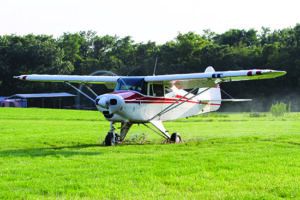
I am fortunate that my flight instructor always taught me to set a decision point for being airborne during a takeoff from a soft field. This technique may have saved my life, or at least prevented me from some serious damage.
There was a local airport with a gravel strip perpendicular to the paved runway. The winds were favoring the gravel strip, and I needed the practice, so I landed uneventfully. During the taxi back, I noticed a few spots were softer than I anticipated. I set a decision point, which was a shed off to the side of the runway, where I would abort the takeoff if I wasn’t airborne.
During the takeoff roll, something did not feel right. As the shed approached, I aborted and quickly came to a stop. The nice thing about a drag-induced takeoff abort is that same drag will reduce the real estate required to come to a safe stop.
I taxied over to the paved runway and departed without issue. Had I committed to that takeoff, I might have ended up right in the face of the 50-foot-high trees at the end of the runway.
SOFT-FIELD TAKEOFFS
Since there is a requirement to train and check certificate applicants on soft-field takeoffs and landings, I will be brief in discussing technique. If flying with passengers, and they have not been to a soft field before, I feel it’s worth briefing, them, too. Before one even reaches the takeoff roll, one must taxi to the runway. More power is typically required to keep the aircraft rolling. Once the aircraft is moving, it is ideal to keep it moving (see the sidebar below). This helps prevent the aircraft from getting stuck in a divot or soft spot in the field. Obviously, stopping may be required, especially if there is other traffic in the area. During ground operations, a vigilant scan is crucial. The layout may not be as clearly delineated, and straying from the designated taxiways and runways can result in a higher risk of FOD or even running the prop or gear into something hiding in the grass.
Since soft (or potentially rough) fields induce drag and the surfaces can potentially damage your landing gear, the goal during takeoff is to get the aircraft off the ground as soon as possible. All operations on soft-fields in tricycle gear aircraft should be conducted with a healthy amount of back pressure to keep the nosewheel as light as possible. The trick is to get the aircraft off the ground and building energy in ground effect, without causing a tail strike. Once in ground effect, accelerate to VX or VY, as appropriate, and continue the climb as usual. Once at a safe altitude and airspeed, do not forget to retract any flaps that were added to increase lift during the takeoff roll.
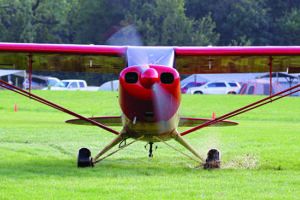
After a successful landing on a soft surface, your first inclination might be to come to a full stop and clean up the airplane. On pavement, once on a taxiway, that’s a good idea. Not so much on a soft field, since it might require lots of power in a confined space to get moving again. Best to keep it rolling, slowly, until at a parking spot.
On departure, you might want to pull the airplane out of any ruts or holes it’s settled into before starting an engine. Regardless, you’ll need more power to get rolling than on pavement, and you’ll likely need to sharply reduce power once rolling to maintain control. There’s a sweet spot of a power setting for taxiing on soft surfaces on any given day. Your job is to find it. — J.B.
SOFT-FIELD LANDINGS
Soft-field landings are just like regular landings…only softer. Easy peasy, right? I mean, if I could land softly every time, wouldn’t I just do that? In all seriousness, the approach can be flown similar to a short field, but with a touch of power left in through ground effect. Full flaps are almost always recommended, which permits the aircraft to touch down at the slowest speed possible. In low-wing airplanes, take extra care during your post-flight inspection to ensure nothing too hard was thrown up into the flaps from the wheels.
As with any landing attempt, excessive speed may result in floating and potential ballooning, so it’s more about keeping an appropriate speed and minimizing the descent rate at touchdown. An ideal touchdown will come with a nose-up attitude and the aircraft should stay that way until it reaches taxi speed. If you keep the nose off the ground for as long as possible, there is ample opportunity to abort the landing if necessary.
Much of the aircraft’s weight will be still carried by the wings, and if the field conditions do not allow for a safe landing and there is adequate space to clear any obstacles, a go-around can be safely initiated. Once you commit to the landing, slowly lower the nose to the surface. Just like we stated in ground operations, it is ideal to keep the aircraft moving. Brakes are something mostly left behind on soft fields. The extra drag is adequate to slow the aircraft down, and braking can impose additional force on the nosewheel.
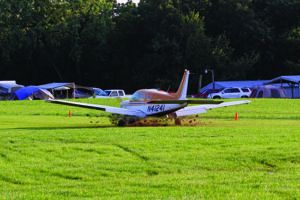
Field conditions are vital and can take some research to determine. For airplanes with manuals providing performance numbers for grass or other soft fields, the numbers are predicated on a dry surface. Recent rain can turn the most serviceable soft field into a muddy, slippery mess. This can lead to an unintentional exit from the runway or getting stuck on landing or taxi. If the aircraft is sinking into the soft field, the takeoff performance could be degraded to the point where the aircraft will not become airborne at all.
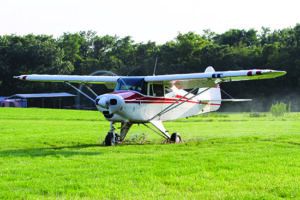
If there was rain within a few days of your arrival to a soft field, it is worth a call to the airport manager. They usually have a good idea of how dry the surfaces are, and can even give some Pireps or other info on arrival and departures. The grass and soft fields worth visiting might not be up to date on their Notam submissions, of course, and there’s simply no substitute for picking up the phone and calling to ask.
If the aircraft is already on the ground at a soft field, you can check the runways and taxiways yourself prior to attempting a takeoff.
SHORT AND SOFT
There is definitely a lot of overlap in technique in soft- and short-field landings, but they diverge at points. According to the FAA’s Airplane Flying Handbook, soft-field landing technique should not involve brakes, while short-field technique involves maximum braking once the nosewheel is down. A small float during the transition from approach to land is generally acceptable on a soft field, but as the AFH states, “A lack of floating during the flare with sufficient control to touch down properly is verification that the approach speed was correct” in regard to short-field landing technique.
So what happens when you are flying to a soft field that’s also a short field? The first step is admitting you have a problem. Well, maybe not a problem, but both individually create their own threats that need to be mitigated. Combining both requires a sharp skill set and a healthy dose of aeronautical decision-making.
A low pass never hurt anyone, and it can give the pilot a good idea of what descent profile may work best. It also might scare away some critters that could be enjoying the runway. During that low pass, why not pick out a touchdown point? That way, we can avoid the dreaded snap decisions that arise when the aircraft is floating just a little more than intended. If you feel like you need brakes, apply them slowly and evenly. Ease off if there is any slippage, and always maintain proper crosswind controls.
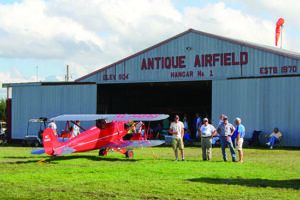
I find so often that my recommendation at the end of the day is try to a new experience with either an instructor or another pilot who has been around the block and enjoys showing people the ropes. First, it allows a pilot trying something for the first time with a safety net. It takes the threat (first time landing on a soft field) and mitigates it.
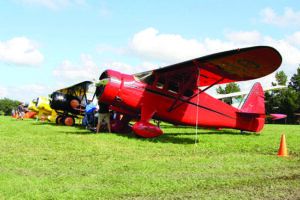
Plus, it helps bring the aviation community together, which is one of the best parts of general aviation. Many of the pilots I know fly professionally or use their aircraft exclusively for mission-based flying. While there is still enjoyment there, many of us do not spend enough time really enjoying the art of flying.
My local soft fields have airport fly-ins, restaurants and even beach-front parking. If you are looking for something fun to do that can sharpen your skills, look no further than the local grass strip.
MORE THAN JUST GRASS
If you are like me, when someone mentions a soft-field takeoff or landing, I think of grass strips. Soft fields can be so much more! Snow, sand, mud and gravel are all perfect examples of soft fields. Different surfaces present different challenges. Snow can vary from a small, compact layer to fluffy, fresh powder. Fresh snow will make takeoffs more challenging with the additional drag, but does not tend to slip or skid as much as packed snow. Gravel is usually a firm surface, but tends to get muddy after rain. Gravel also produces more FOD risk, so be mindful. If you are lucky enough to be operating an aircraft with reverse, considering the surface is always a good idea: Reverse can kick up loose rocks and other FOD, as well as create whiteout conditions if there is snow on the runway.
If you ever want to see some phenomenal examples of landing on a soft field, watch the Royal Flying Doctor Service land a Pilatus PC-24 on an unpaved surface in the Australian Outback. Further down the YouTube rabbit hole are the C-130s landing in Antarctica. If that doesn’t inspire you to plan your next soft-field adventure, nothing will!
Ryan Motte is a Massachusetts-based Part 135 pilot, flight instructor and check airman. He moonlights as Director of Safety when he isn’t flying.




